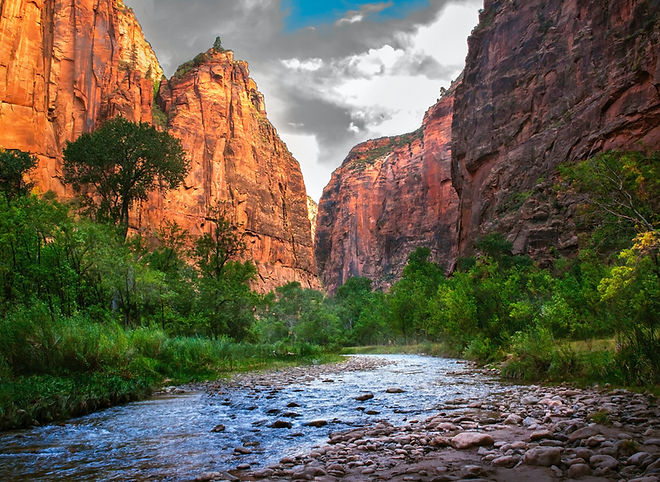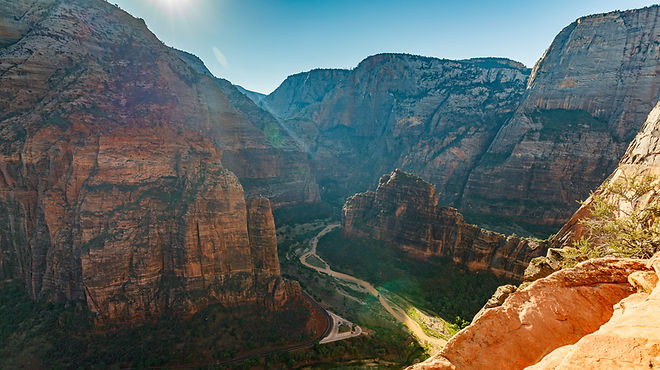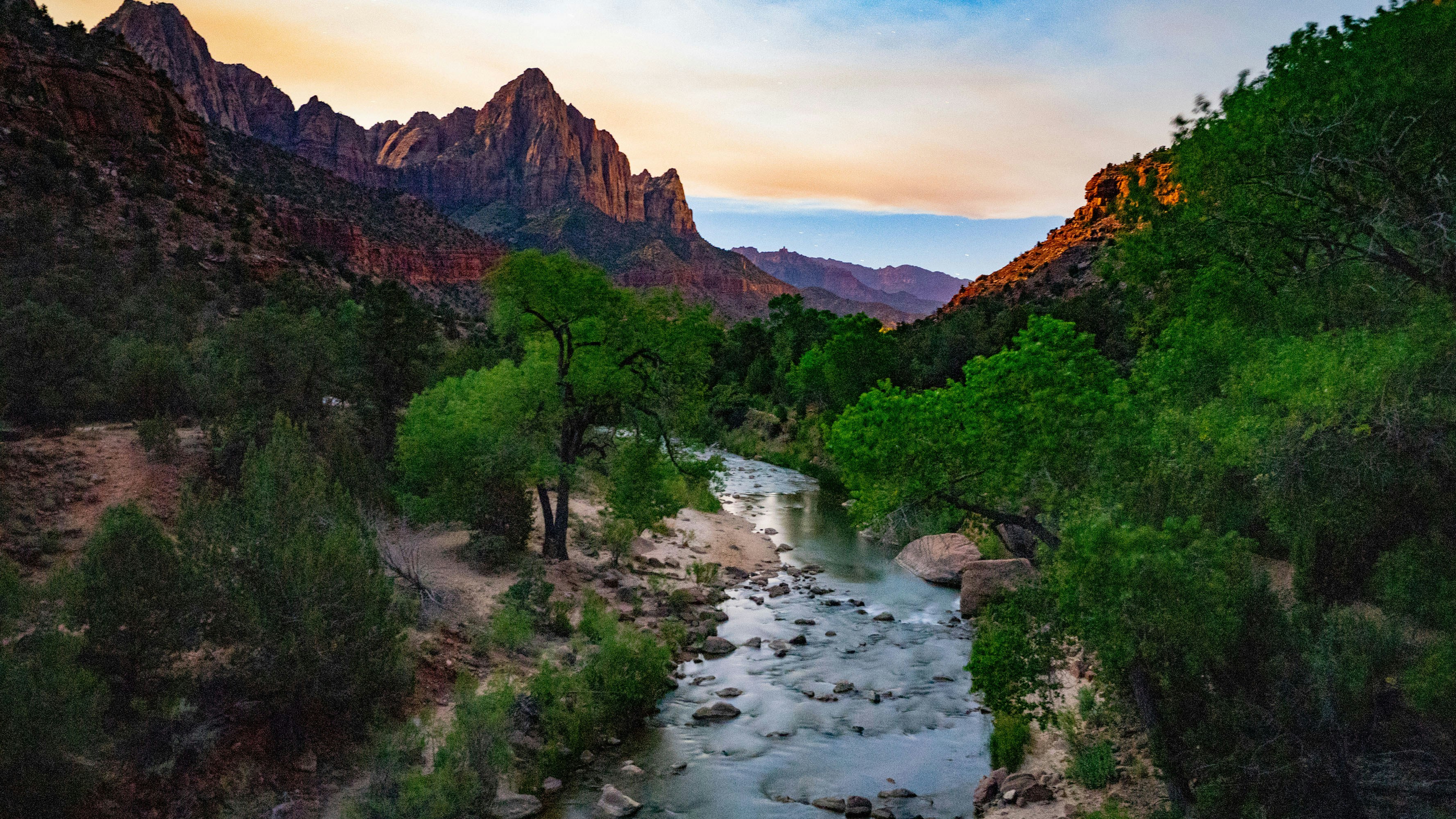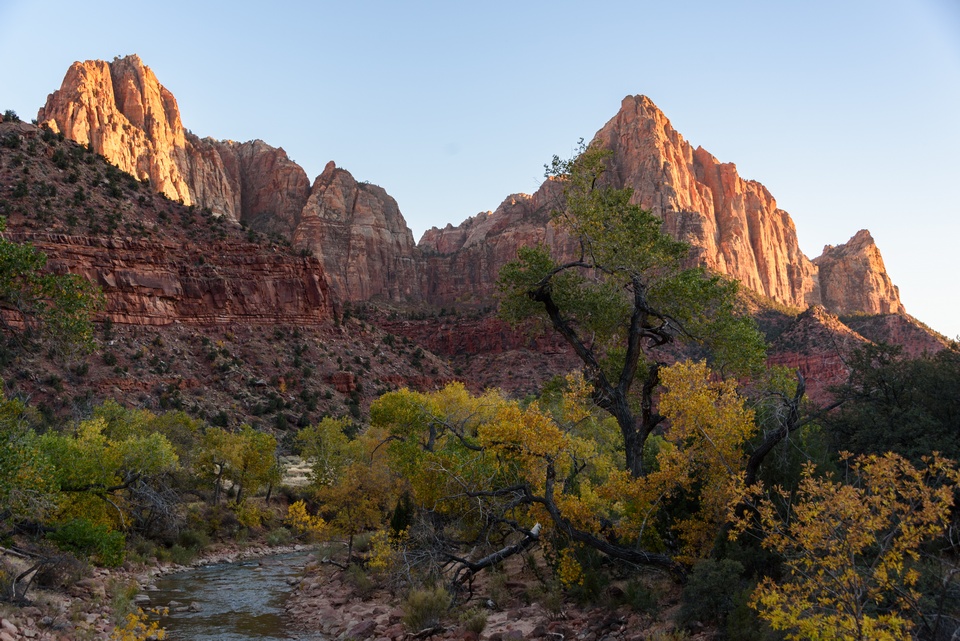Zion National Park, located in southwestern Utah, is one of the most iconic and breathtaking natural reserves in the United States.
Known for its towering sandstone cliffs, deep canyons, and lush landscapes, Zion attracts millions of visitors each year who come to experience its unique beauty and adventure opportunities.

Whether you’re a nature enthusiast, a hiker, or simply someone looking for a tranquil escape, Zion offers a variety of experiences that showcase the wonders of the American Southwest.
A Brief History of Zion National Park
Established as a national park in 1919, Zion has a rich cultural and geological history that dates back millions of years.
The park’s name, “Zion,” is derived from a biblical reference, meaning a place of peace and refuge.
Long before it became a national treasure, the region was inhabited by Native American tribes such as the Anasazi and Paiute, who left behind petroglyphs and archaeological evidence of their presence.

European settlers first arrived in the 1860s, and by the early 20th century, the area gained recognition for its natural beauty.
President William Howard Taft designated the land as Mukuntuweap National Monument in 1909, but it was renamed Zion National Park a decade later.
Today, Zion stands as one of the crown jewels of the U.S. National Park System, renowned for its diverse ecosystems and dramatic landscapes.
The Geology of Zion: Nature’s Canvas
One of the most remarkable aspects of Zion National Park is its geology. The park is part of the Colorado Plateau, a vast region known for its colorful layers of rock formations.
Zion’s iconic sandstone cliffs, some of which rise over 2,000 feet, were formed through millions of years of sediment deposition, tectonic activity, and erosion.

Visitors to Zion are often struck by the vibrant hues of red, pink, and orange that dominate the park’s landscape.
These colors are the result of iron oxide and other minerals embedded in the rock layers.
Over time, the Virgin River, which flows through Zion Canyon, has carved out the dramatic gorges and slot canyons that make the park so unique.
Top Attractions in Zion National Park
There are countless reasons to visit Zion National Park, but a few standout attractions truly define the park’s appeal:
- Zion Canyon Scenic Drive
This iconic 6-mile route takes you through the heart of Zion Canyon, offering stunning views of the towering sandstone cliffs and lush vegetation below. The drive is only open to shuttle buses from March to November to reduce traffic, allowing visitors to relax and enjoy the scenery. - The Narrows
One of Zion’s most famous hikes, The Narrows takes you through the narrowest section of Zion Canyon, where the walls rise hundreds of feet above you while the Virgin River flows beneath your feet. This hike can be as short or as long as you like, but it’s an unforgettable experience of wading through water in a dramatic natural setting. - Angels Landing
For those seeking an adrenaline-pumping adventure, Angels Landing is one of the most thrilling hikes in the U.S. This steep, 5.4-mile round trip hike leads you up a narrow ridge with sheer drop-offs on either side, but the reward is an awe-inspiring view of Zion Canyon from the top. - Emerald Pools
A more family-friendly hike, the Emerald Pools trail takes you to a series of pools and waterfalls. The trail offers different difficulty levels, from easy walks to more strenuous climbs, and provides stunning views of the surrounding cliffs and plant life. - Kolob Canyons
Located in the less-visited northwestern section of the park, Kolob Canyons offers solitude and equally stunning landscapes. The five-mile scenic drive through this section gives visitors a chance to see the towering red cliffs and the Kolob Arch, one of the world’s largest natural arches.
Wildlife and Ecosystems in Zion
Zion National Park is home to an incredible diversity of plant and animal species.
Thanks to its varied elevation and microclimates, the park supports everything from desert cacti to lush, riparian vegetation.
Visitors might encounter mule deer, bighorn sheep, and even the occasional mountain lion while exploring the park’s trails.

Birdwatchers will be thrilled by the presence of over 290 species of birds, including peregrine falcons, California condors, and red-tailed hawks.
Zion’s unique ecosystems offer plenty of opportunities for wildlife viewing, especially in the early morning and late evening when animals are most active.
Best Time to Visit Zion National Park
Zion is a year-round destination, but each season offers a different experience:
- Spring (March to May): Spring brings blooming wildflowers, mild temperatures, and a vibrant landscape. The waterfalls are often at their peak during this time, making it a popular season for hiking.
- Summer (June to August): Summer is the busiest season, with long, hot days. While the heat can be intense, it’s a great time for water hikes like The Narrows. Be prepared for crowds, as this is the peak tourist season.
- Fall (September to November): Fall is considered by many to be the best time to visit Zion. The cooler temperatures and changing leaves make it perfect for hiking and photography.
- Winter (December to February): Winter in Zion is quiet and serene. While some trails may be closed due to snow or ice, the lower elevation areas of the park remain accessible, offering a peaceful experience without the crowds.
Tips for Visiting Zion National Park
To make the most of your visit to Zion National Park, consider the following tips:
- Plan ahead: Zion can get crowded, especially during peak seasons. Booking accommodations and permits in advance is essential.
- Use the shuttle: The park shuttle system helps reduce congestion and offers an easy way to explore the main canyon.
- Stay hydrated: The desert climate can be unforgiving, especially during the summer. Always carry plenty of water, sunscreen, and a hat.
- Leave no trace: Zion is a protected environment, and it’s important to follow the Leave No Trace principles to preserve the park for future generations.
Zion National Park: A Must-Visit Destination
Whether you’re drawn by its majestic cliffs, challenging hikes, or tranquil beauty, Zion National Park is a destination that offers something for everyone.
Its combination of natural wonder, adventure opportunities, and peaceful retreats makes it one of the most beloved national parks in the U.S.

Whether you’re exploring The Narrows, scaling Angels Landing, or simply marveling at the views from the scenic drive, Zion provides an unforgettable experience that will leave you in awe of nature’s grandeur.








